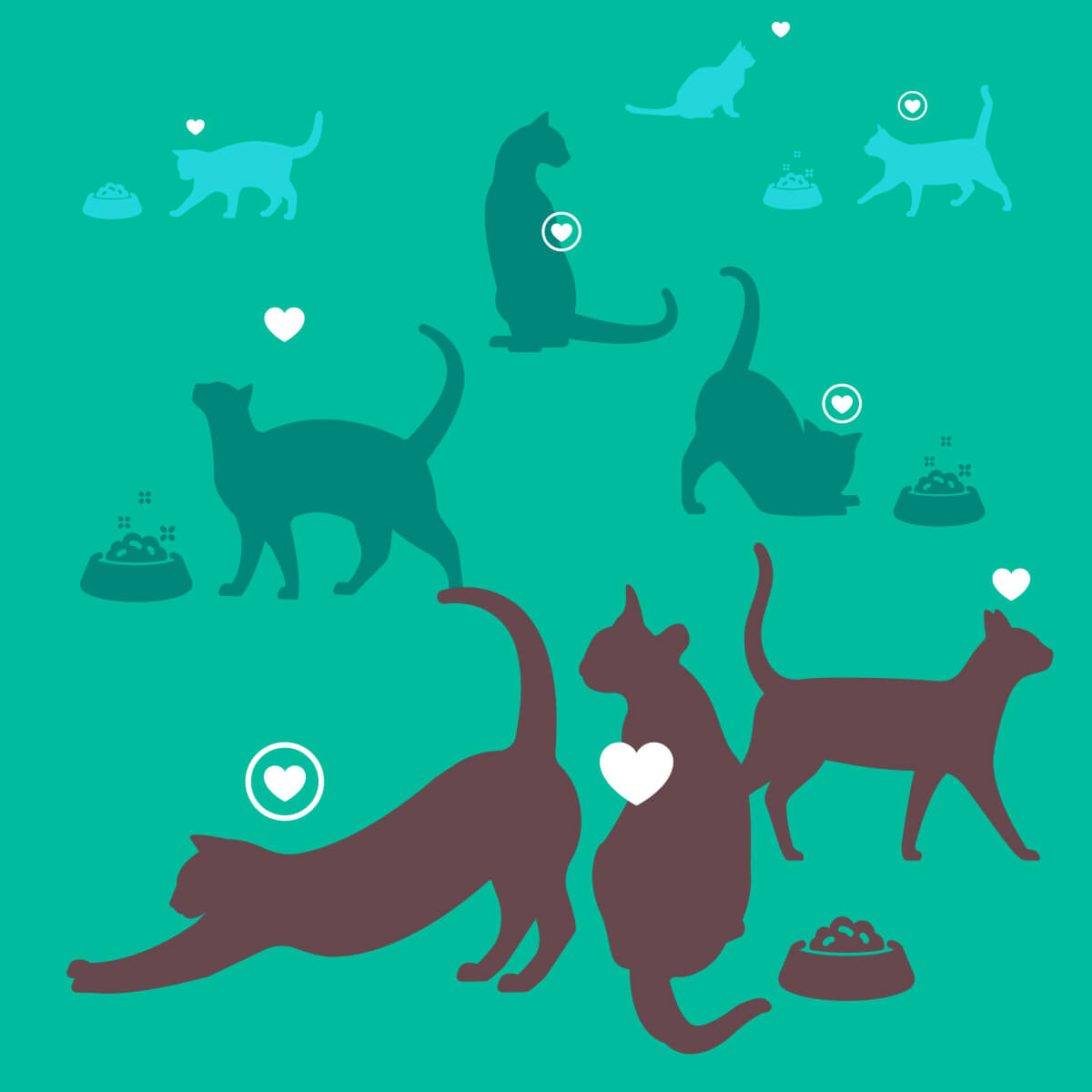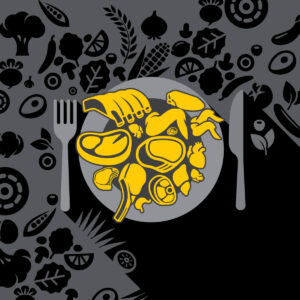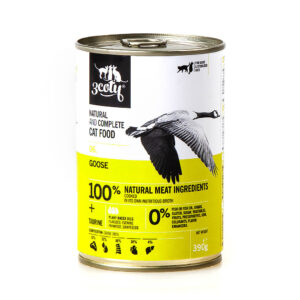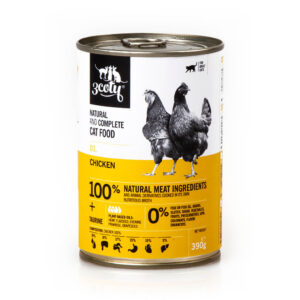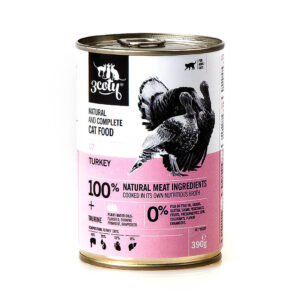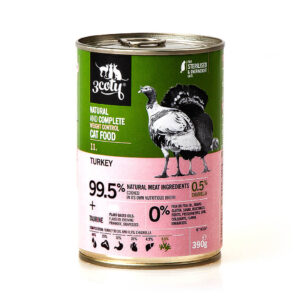Struvite stones in the urinary tract
Urinary tract problems such as struvite crystals in cats can give owners quite a headache. Some urinary matters can be successfully managed with the proper diet which prevents distress to your cat. It is after all the distress that makes the issue apparent to the owner and the distress that we want to resolve.
How to spot the problem?
You can recognize that there might be a bladder stone problem with your cat when urination gets more frequent, you see some blood in the urine or your cat starts urinating outside the litter box. Other bladder stone symptoms include cats losing their appetite or showing signs of being tired and being more sleepy than usual.
The only way to be sure you get the right diagnosis is to test your cat’s urine. Taking urine samples from cats is not simple so don’t worry if you struggle with it at home. You can visit your vet who will do it for you. The urine sample has to go through biochemical and microscopic analysis to determine what is causing the problem. A possible problem, struvite crystals, is easily recognized in concentrated urine so verification if this is your cat’s problem is relatively easy.
Dealing with problem
If the diagnosis is struvite stones then there are two treatments for bladder stones in cats:
- In their early stage, problem struvite stones in cats can be dissolved which can be simply accomplished by a specially formulated diet. This diet will change the pH of the cat’s urine and after some time the stones will be dissolved. During this time your cat cannot eat any other food, including no treats. Within one or two months the struvite stones should have dissolved and the problem resolved.
- If there is a problem with this kind of special diet or the stone buildup is severe, then the stones must be removed surgically in a procedure called a cystostomy. It is performed under general anaesthetic.
Avoiding the problem in the first place
Surgery is always stressful for you and your cat and anything that can be done to avoid them should always be preferred. To help you do that, we want to explain how struvite stones (also referred to as struvite crystals) build up and how you can avoid them becoming a problem just by giving your cat specific foods.
What are urinary stones?
The scientific name of the commonly known urinary stones is UROLITH. A urolith is the formation of sediment, consisting of one or more poorly soluble crystalloids in the urinary tract. Urinary crystals form when urine is supersaturated with a specific mineral or mineral compound.
One of the most common forms of bladder stone is struvite stone, made of a chemical substance called magnesium ammonium phosphate, so this is a combination of ammonium, phosphate and magnesium. They count for approximately 15% of all urinary stones. Humans can also develop urinary stones and as is the case with cats they are the result of some kind of inflammation or disease.

When urine pH is above 6.5 – so it gets more alkaline – the struvite crystals can form. This can happen when a cat is stressed and then hyperventilates which may raise urine pH above 6.5. In the morning before the first meal, urine pH may also be high. Highly concentrated urine may result in a couple of struvite stones, which in themselves may not be a big problem. However, they may irritate the urinary tract, leading to inflammation and infection.
There also is a certain urinary bacteria which produces a substance called urease which leads to a change in urine acidity. When the pH-level goes above 6.5 then this bacteria-produced urease can also lead to struvite stones.
Steps to prevent struvite crystals from forming
Whether through stress or overconcentrated urine, the key aspect to the prevention of struvite crystals from developing is lowering the pH of the urine. As mentioned above, the initial veterinary treatment is all focused on reducing the urinary pH level.
The essential amino acid methionine plays an important role in the cat’s metabolism and helps reduce the urine pH level. At 3coty® we have introduced a special struvite diet program which makes use of this important ingredient. Products of the 3coty® Care line number 51. and 52. with chicken and turkey are so formulated to be able to change your cat’s urine pH after 4-8 weeks and help their body dissolve struvite stones. This diet can be used as a maintenance diet for cats with a tendency to urinary crystals and can support veterinary treatment, but not replace it.
Ensuring your cat gets enough liquid also helps, which is why we recommend only feeding cats wet food. Their low thirst drive means cats who only eat dry food may not be getting enough liquid.
In addition to these two natural ways to dissolve bladder stones in cats, we recommend a urine check-up for cats at least once a year and if any signs of struvite stones appear it is always better to introduce a special diet and get rid of the problem fast and easy for you and your cat.
Long lives despite a tendency to struvite stones
Cats who have been diagnosed with struvite stones in the past can live long healthy lives and not require multiple cystotomies. Simply by choosing to feed your cat food designed to support their body with dissolving struvite stones, you can help prevent them from getting bad enough to cause a problem. We all want our cats to live long, happy and healthy lives. With the right care and food that is perfectly achievable!
